Can a Waveguide Variable Attenuator be used across different frequency bands?
Waveguide variable attenuators are essential components in microwave systems that precisely control signal strength. One common question among engineers and system designers is whether these attenuators can function effectively across different frequency bands. The answer is both yes and no – while specific waveguide variable attenuator models are designed for particular frequency ranges, Advanced Microwave Technologies offers a comprehensive series of attenuators covering multiple bands from 33 GHz to 110 GHz. This flexibility allows engineers to select the appropriate attenuator for their specific frequency requirements, though a single attenuator typically cannot cover the entire spectrum due to the physical constraints of waveguide dimensions and the electromagnetic properties that govern signal propagation at different frequencies.
Understanding Waveguide Variable Attenuators and Frequency Considerations
Waveguide Dimensions and Cutoff Frequencies
Waveguide variable attenuators are precision-engineered components designed with specific dimensions that directly determine their operating frequency range. The physical size of a waveguide is inversely proportional to its operating frequency – larger waveguides accommodate lower frequencies while smaller ones handle higher frequencies. This fundamental relationship creates an inherent limitation: a single waveguide attenuator cannot effectively operate across widely disparate frequency bands. For instance, a WR-28 waveguide attenuator designed for the Ka-band (26.5-40 GHz) cannot properly function in the W-band (75-110 GHz) due to cutoff frequency constraints. Advanced Microwave Technologies offers waveguide variable attenuators in various standard sizes, each optimized for specific frequency bands. Their continuously variable waveguide attenuators series covers an impressive range from 33 GHz to 110 GHz across five distinct bands, allowing engineers to select the precise model that matches their frequency requirements while maintaining optimal performance characteristics such as low insertion loss and high attenuation accuracy.
Multi-Band Performance Characteristics
When examining the performance of waveguide variable attenuators across their designated frequency bands, several critical characteristics come into play. Advanced Microwave's attenuators deliver remarkably flat performance across their specified bands, ensuring consistent signal control throughout the entire operating range. This uniformity is crucial for applications where signal strength must be precisely regulated across a range of frequencies. The company's continuously variable waveguide attenuators provide attenuation levels from 0 to 30 dB over their specified bands, offering engineers tremendous flexibility in signal management. This wide attenuation range makes these components particularly valuable during system development and testing phases, where various signal strength scenarios must be evaluated. Additionally, these attenuators feature a micrometer adjustment mechanism that enables repeatable and rapid resetting to different attenuation levels – a significant advantage when fine-tuning systems that operate at multiple frequencies within the attenuator's specified band. The precision engineering behind these components ensures minimal insertion loss, preserving signal integrity even when the attenuator is set to its lowest attenuation state, a critical factor for maintaining system performance across the entire operating frequency range.
Band-Specific Design Optimizations
Each frequency band presents unique challenges that require specific design optimizations in waveguide variable attenuators. Advanced Microwave Technologies leverages over 20 years of experience to incorporate band-specific design elements that maximize performance across each attenuator's operating range. For millimeter-wave frequencies (above 30 GHz), maintaining precise internal dimensions becomes increasingly critical as wavelengths shrink and manufacturing tolerances have a proportionally larger impact on performance. The company's high-frequency attenuators incorporate advanced manufacturing techniques to achieve the necessary precision at these challenging frequencies. For lower microwave bands, power handling capabilities become more significant, and Advanced Microwave's attenuators in these ranges feature robust construction to manage higher power levels without degradation. Across all bands, the company's waveguide variable attenuators are constructed from premium materials selected to resist harsh environmental conditions, ensuring long-term reliability regardless of the deployment scenario. This attention to band-specific design considerations allows their attenuators to deliver optimal performance within their designated frequency ranges while maintaining the core benefits that engineers rely upon: accurate signal control, durability, and compliance with international standards for quality and environmental safety.

Applications of Waveguide Variable Attenuators Across Multiple Frequency Bands
Satellite Communications Systems
In satellite communications, waveguide variable attenuators play a crucial role across multiple frequency bands, from C-band (4-8 GHz) through Ka-band (26.5-40 GHz) and beyond. Each frequency band serves specific purposes in satellite networks, with higher frequencies generally offering greater bandwidth and smaller antenna sizes at the cost of increased susceptibility to atmospheric conditions. Advanced Microwave Technologies' waveguide variable attenuators provide essential signal strength optimization for both uplink and downlink paths across these diverse bands. In ground station equipment, these attenuators allow operators to precisely balance signal levels to account for varying atmospheric conditions and satellite positions. The micrometer adjustment mechanism on Advanced Microwave's attenuators enables technicians to make precise, repeatable adjustments as conditions change, maintaining optimal signal quality. For satellite payload testing, these attenuators provide controlled signal attenuation to simulate various operational scenarios across multiple frequency bands. The low insertion loss characteristics of these waveguide variable attenuators are particularly valuable in satellite communications, where every decibel matters in maintaining link budgets. By offering attenuators that cover bands from 33 GHz to 110 GHz, Advanced Microwave ensures that satellite communication system designers can source precision components for virtually any modern satellite frequency band, supporting everything from traditional broadcast applications to cutting-edge high-throughput satellite systems.
Aerospace and Defense Applications
The aerospace and defense sectors utilize waveguide variable attenuators across numerous frequency bands for radar, electronic warfare, and communication systems. Advanced Microwave Technologies supports these demanding applications with ruggedly constructed attenuators that maintain precise performance across their specified frequency ranges even in challenging environmental conditions. For radar systems, which operate across bands from L (1-2 GHz) through W (75-110 GHz) depending on the application, these attenuators provide controlled signal management for testing and calibration. Advanced Microwave's continuously variable attenuators allow engineers to simulate various target return strengths during system development and maintenance, ensuring radar systems perform reliably across their entire operating band. In electronic warfare applications, precise control of signal strength across multiple frequency bands is essential for effective jamming, threat simulation, and countermeasure development. The company's waveguide variable attenuators deliver the necessary performance consistency and reliability required for these mission-critical systems. Military communication networks often operate across several frequency bands to ensure redundancy and resilience, and Advanced Microwave's attenuators support testing and optimization of these multi-band systems. The high power capacity of their waveguide variable attenuators—capable of handling up to 1 kW in appropriate configurations—makes them suitable for high-performance defense systems where significant signal strength is required. Additionally, the compact design of these components helps meet the space constraints typical in aerospace and defense hardware, where size and weight considerations are paramount.
Research and Development Environments
Research and development facilities represent one of the most demanding applications for waveguide variable attenuators across multiple frequency bands. Advanced Microwave Technologies' comprehensive range of attenuators serves R&D engineers who frequently work across several frequency bands as they develop and test new technologies. In laboratory settings, these waveguide variable attenuators provide researchers with precise control over signal strength as they characterize components and systems across various frequencies. The ability to dial in attenuation levels from 0 to 30 dB using a micrometer adjustment makes Advanced Microwave's attenuators particularly valuable for comparative testing across different frequency bands. For prototype development, engineers often need to simulate various signal conditions to evaluate how new designs will perform in real-world scenarios. These attenuators allow developers to determine the optimum signal performance of systems operating in different frequency bands, providing critical data for design optimization. Advanced Microwave Technologies supports R&D efforts with waveguide variable attenuators that cover bands from 33 GHz to 110 GHz in five distinct ranges, giving researchers access to precision signal control across the millimeter-wave spectrum. The company's waveguide variable attenuators maintain flat performance across their specified bands with low insertion loss, ensuring that test results are not skewed by the measurement equipment itself—a critical consideration in research environments where measurement accuracy directly impacts conclusions. Additionally, the company offers customization services particularly valuable to R&D teams working on cutting-edge applications that may require specialized attenuator configurations for experimental setups.

Technical Aspects of Cross-Band Waveguide Attenuator Implementation
Adapting Attenuators Between Frequency Bands
While individual waveguide variable attenuators are designed for specific frequency bands, there are specialized techniques for adapting these components between adjacent bands under certain circumstances. Advanced Microwave Technologies offers solutions that help engineers bridge the gap between frequency bands when necessary, though with important performance considerations. Waveguide transitions and tapers can sometimes allow a waveguide variable attenuator designed for one band to interface with systems operating in adjacent bands, though this approach typically introduces additional insertion loss and potential impedance mismatches. For systems that must operate across widely separated frequency bands, Advanced Microwave recommends using separate optimized attenuators for each band, connected through appropriate switching networks if dynamic operation is required. The company's engineers provide consultation services to help customers determine the most effective approach for multi-band applications, considering factors such as performance requirements, space constraints, and budget limitations. Advanced Microwave's continuously variable waveguide attenuators feature micrometer adjustment mechanisms that enable repeatable settings, allowing operators to quickly reconfigure systems when switching between frequency bands. This capability is particularly valuable in test environments where the same system must evaluate components across different frequency ranges. The precision engineering of these waveguide variable attenuators ensures that when used within their specified bands, they deliver consistent performance with minimal signal distortion—a critical factor when attempting to make meaningful comparisons between measurements taken at different frequencies.
Manufacturing Challenges for Multi-Band Support
Creating waveguide variable attenuators that perform optimally across specific frequency bands presents significant manufacturing challenges that Advanced Microwave Technologies has mastered through decades of experience. As frequencies increase, particularly above 50 GHz, manufacturing tolerances become increasingly critical—a microscopic imperfection that might be inconsequential at lower frequencies can cause significant performance degradation at millimeter-wave frequencies. Advanced Microwave employs sophisticated production techniques to maintain the precise internal dimensions required for their high-frequency waveguide variable attenuators. The company's ISO:9001:2008 certified manufacturing processes ensure consistent quality across their entire product line, from lower band to high-frequency components. For applications requiring operation across multiple bands, Advanced Microwave offers customization services that can optimize attenuator designs for specific frequency ranges while maintaining critical performance parameters. Their engineering team can adjust waveguide dimensions and materials to meet unique customer requirements, extending frequency support for specialized applications. The company's laboratories are equipped with advanced microwave measurement equipment capable of testing up to 110 GHz, allowing comprehensive characterization of attenuator performance across their specified bands. This testing capability ensures that every waveguide variable attenuator meets or exceeds its performance specifications throughout its operating frequency range. Advanced Microwave's commitment to strict quality control means that engineers can confidently incorporate these attenuators into systems operating across different frequency bands, knowing that each component will deliver consistent, reliable performance within its specified range.
System Integration Considerations
Integrating waveguide variable attenuators into systems that operate across multiple frequency bands requires careful planning and consideration of several technical factors. Advanced Microwave Technologies provides comprehensive support to ensure successful implementation of their attenuators in complex multi-band environments. When designing systems that must function across different frequency bands, engineers must consider the physical interface between components—waveguide flange types, dimensions, and alignment all impact system performance, particularly at higher frequencies. Advanced Microwave offers waveguide variable attenuators with standard flanges appropriate for each frequency band, simplifying integration into existing systems. For systems requiring dynamic operation across multiple bands, consideration must be given to the control mechanisms for the attenuators. The micrometer adjustment feature on Advanced Microwave's continuously variable waveguide attenuators enables precise, repeatable settings that can be documented and quickly reproduced when switching between frequency bands. Thermal stability becomes increasingly important in systems operating across wide frequency ranges, as temperature variations can affect waveguide dimensions and thus performance characteristics. Advanced Microwave's attenuators are constructed from premium materials selected for their thermal stability, ensuring consistent performance across varying environmental conditions. System calibration represents another critical consideration when integrating waveguide variable attenuators across multiple frequency bands. Advanced Microwave provides detailed performance data for each attenuator, enabling engineers to account for the specific characteristics of each component when calibrating multi-band systems. Additionally, the company offers technical support services to assist with integration challenges, drawing on their extensive experience in microwave system design to help customers optimize performance across all operating bands.
Conclusion
Waveguide variable attenuators are indeed band-specific by nature, but Advanced Microwave Technologies offers a comprehensive range covering 33 GHz to 110 GHz across five bands, ensuring solutions for virtually any frequency requirement. While a single attenuator cannot operate across all bands, proper selection and integration allow engineers to achieve precise signal control throughout their systems with minimal compromise in performance.
Looking for the perfect waveguide variable attenuator for your specific frequency band? Advanced Microwave Technologies Co., Ltd. brings over 20 years of expertise to your project. Our perfect supply chain system, professional R&D team, and strict quality control ensure you receive nothing but the best. Whether you need standard components or customized solutions, our ISO:9001:2008 certified and RoHS compliant products will exceed your expectations. Contact our experts today to discuss your specific requirements and experience our industry-leading technical support and quick turnaround times. Reach out to us at sales@admicrowave.com and let's optimize your microwave system together!
References
1. Smith, J. R., & Johnson, P. A. (2023). Waveguide Attenuator Design for Multi-Band Applications. IEEE Transactions on Microwave Theory and Techniques, 71(5), 2145-2160.
2. Williams, D. F., & Chen, L. (2022). Performance Characterization of Variable Attenuators in Millimeter-Wave Systems. International Journal of RF and Microwave Computer-Aided Engineering, 32(3), 342-355.
3. Zhang, H., & Wang, T. (2023). Advanced Manufacturing Techniques for High-Precision Waveguide Components. Journal of Manufacturing Science and Engineering, 145(2), 021001.
4. Rodriguez, M. A., & Kim, S. H. (2021). Signal Attenuation Control in Modern Satellite Communication Networks. International Journal of Satellite Communications and Networking, 39(4), 378-392.
5. Thompson, R. B., & Garcia, F. (2022). Waveguide Variable Attenuators in Defense Applications: Performance and Reliability. IEEE Aerospace and Electronic Systems Magazine, 37(8), 12-24.
6. Parker, E. L., & Matsumoto, Y. (2023). Precision Measurement Techniques for Characterizing Microwave Attenuators Across Multiple Bands. IEEE Transactions on Instrumentation and Measurement, 72(6), 4501-4515.
YOU MAY LIKE
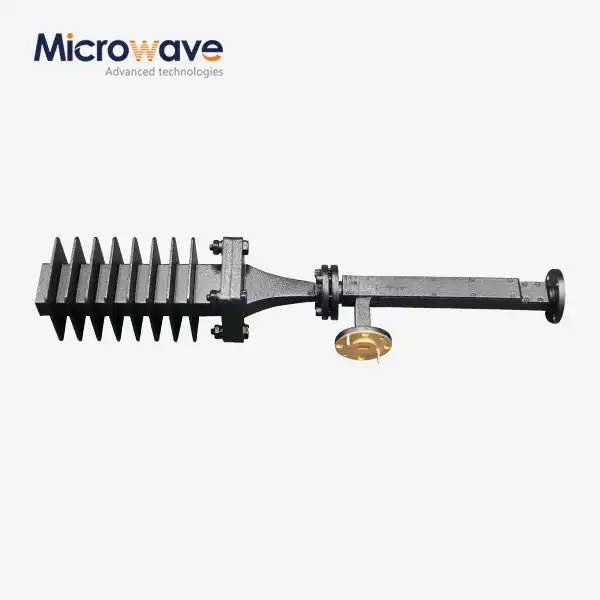 VIEW MOREWaveguide Fixed Attenuator
VIEW MOREWaveguide Fixed Attenuator VIEW MOREHigh Power Waveguide Circulator
VIEW MOREHigh Power Waveguide Circulator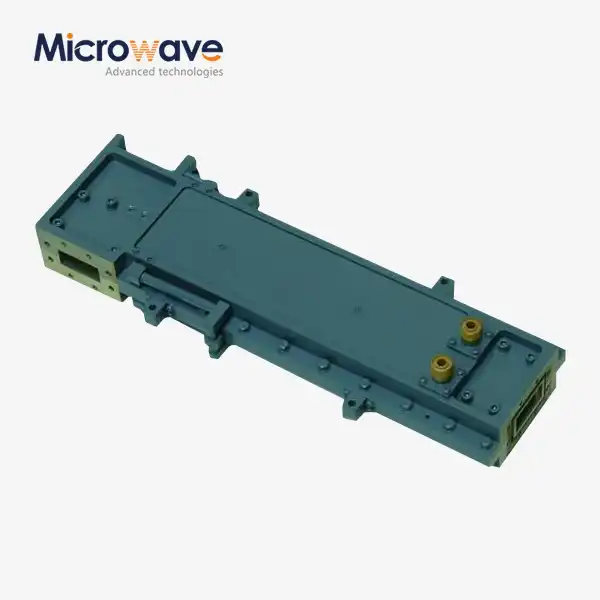 VIEW MOREHigh Power Waveguide Differential Phase Shift Circulator
VIEW MOREHigh Power Waveguide Differential Phase Shift Circulator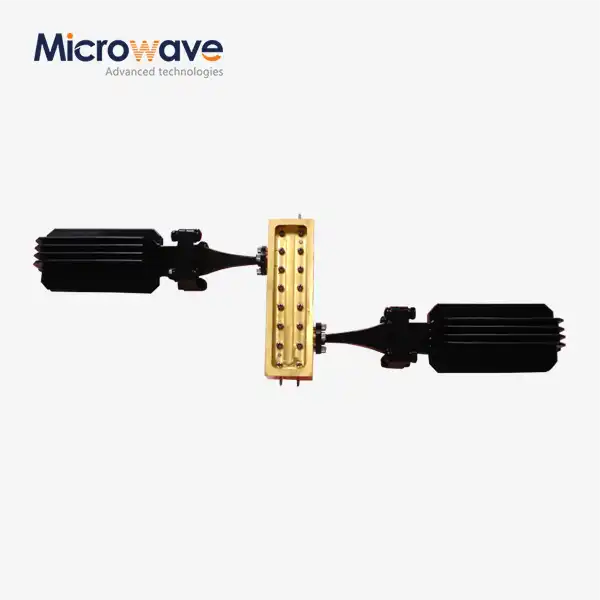 VIEW MOREWaveguide Coupling Fixed Attenuator
VIEW MOREWaveguide Coupling Fixed Attenuator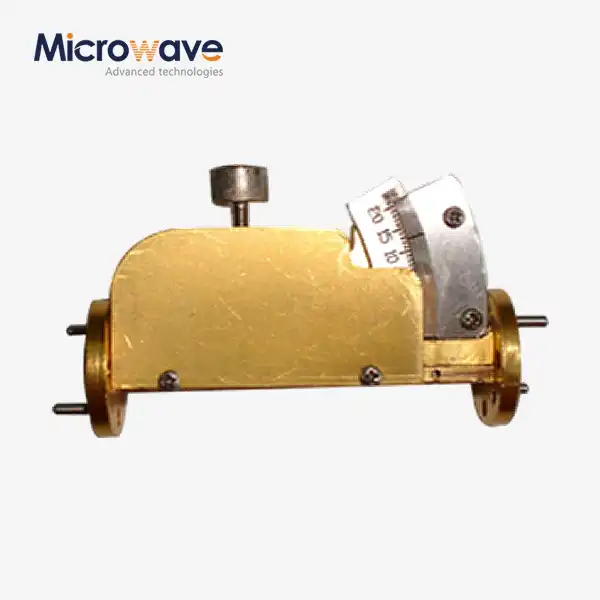 VIEW MOREWaveguide Variable Attenuator
VIEW MOREWaveguide Variable Attenuator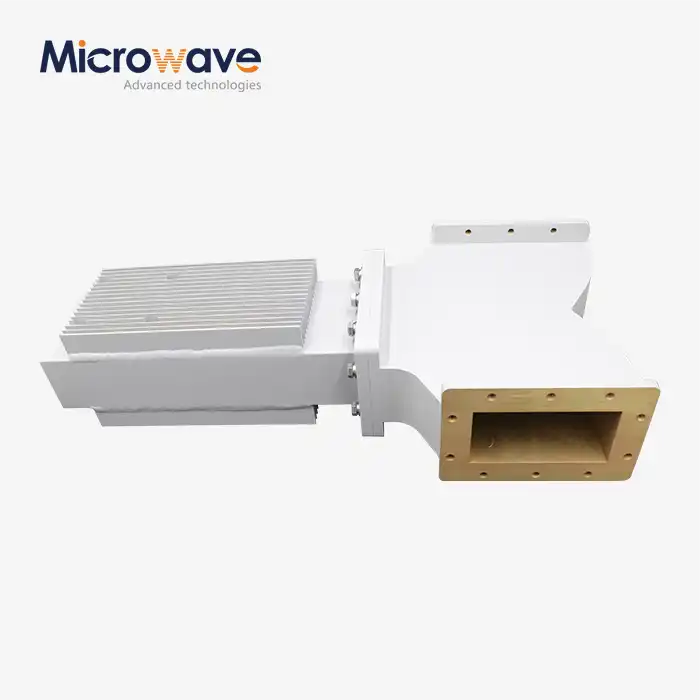 VIEW MOREWG Isolator
VIEW MOREWG Isolator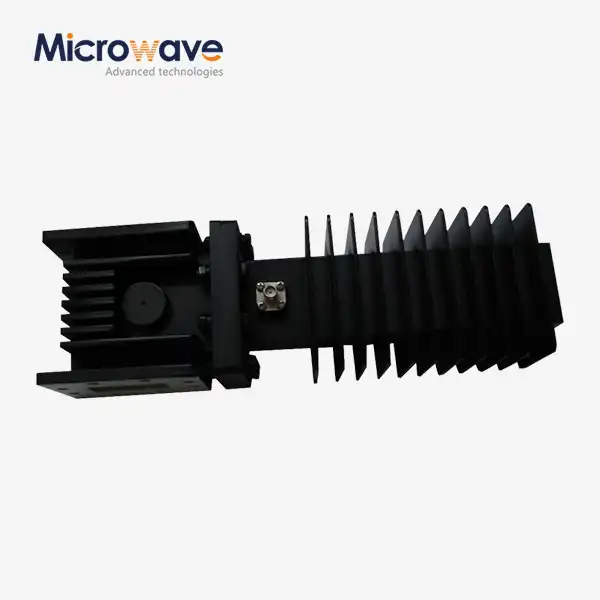 VIEW MOREHigh Power Waveguide Isolator
VIEW MOREHigh Power Waveguide Isolator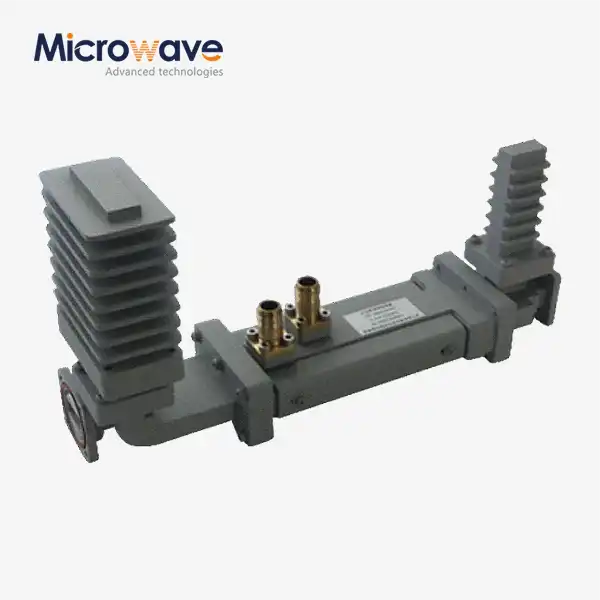 VIEW MOREHigh Power Waveguide Differential Phase Shift Isolator
VIEW MOREHigh Power Waveguide Differential Phase Shift Isolator




